As promised a couple days ago, I'm back to share my pipe smoking passion with the Steemit community. I've been a pipe smoker for 20 years and have worked full time as a tobacconist for a dozen, and I'm still enthusiastic about this hobby.
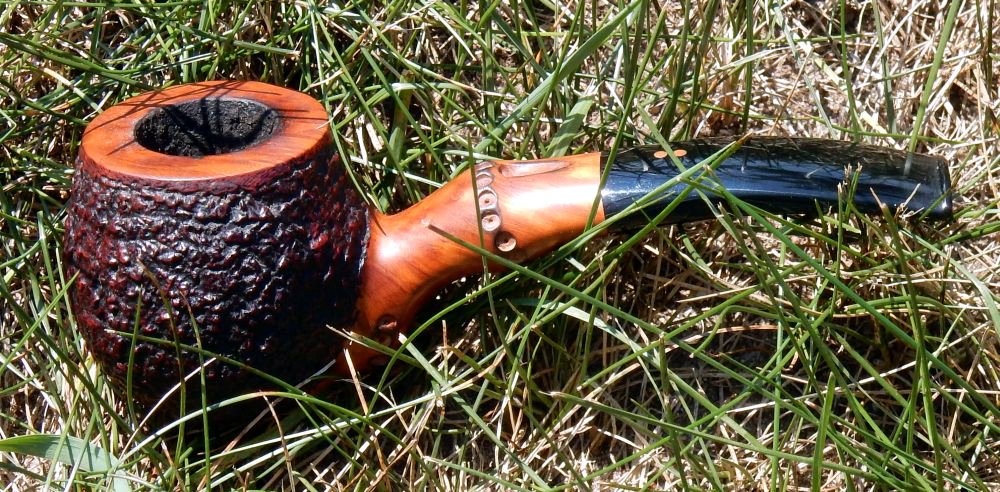
I'll start with a quick rundown of what you need to try pipe smoking, and in the next day or so I'll share a quick tutorial on how to pack and light your first pipe. Keep in mind that, while pipes might require a bit more initial investment than, say, cigars, most of this equipment will last forever. All the pipes in my photographs are over a dozen years old. The tobacco is comparatively cheap, too.
If you go the corn-cob pipe route, you can be puffing in no time, with everything you need, for around $20.
So here's what you need:
A Pipe or Two
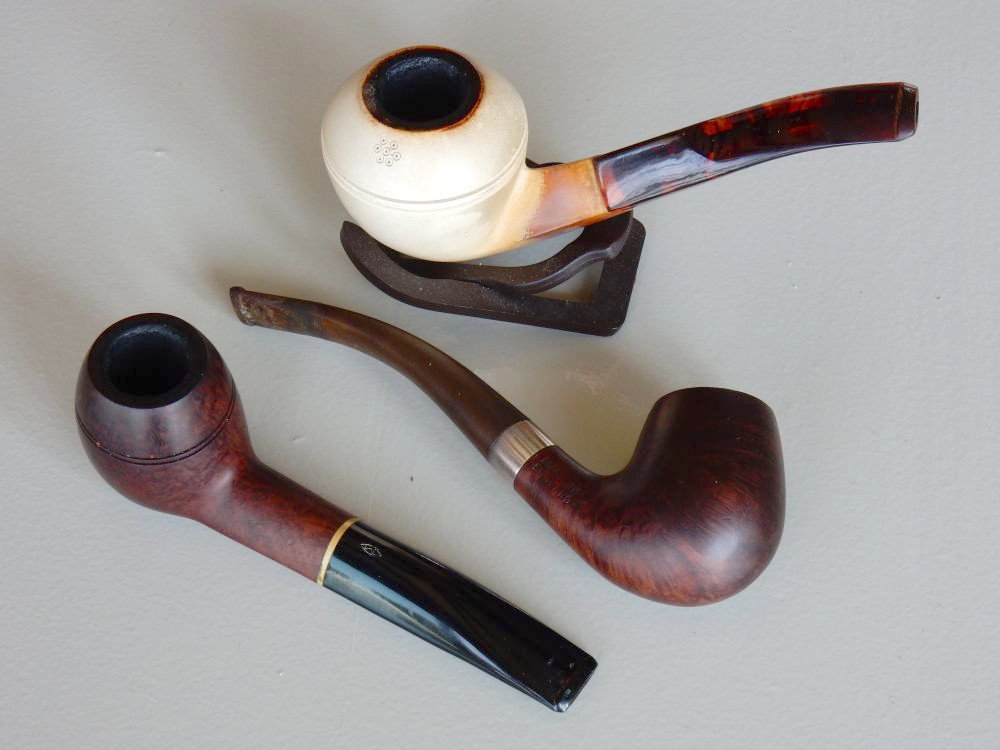
I recommend starting with a briar pipe in a straight shape. Briar wood is harvested from the root burls of Mediterranean heath tree and is the de-facto material for smoking pipes because it does not ignite in a fire. No need to buy an expensive name brand briar. Most tobacco shops will carry a basket of "seconds" for around $30. Used and "estate" pipes are fine, too, so check eBay for great deals. In many cases they smoke better than new pipes because they've already been broken in. And straight pipes tend to be easier to clean and maintain, at least when you're starting out.
Once you start enjoying the pipe, you'll have an entire lifetime to collect examples of different shapes and materials. Pictured above is a meerschaum pipe from CAO, and briar pipes from Dunhill and Savinelli.
Corn-cob pipes are great too. They've available in drug stores, cost around $5, are lightweight, absorbent, and cool smoking. Since it's good to let a pipe rest for a day or so, you might want a rotation of several pipes. Some people recommend seven as a minimum - one pipe for each day of the week. I don't think it's necessary to go that far. Two or three is enough. And corn-cobs are a great way to round out your collection. They're also great for working in the yard, fishing, hiking - anything where losing or breaking the pipe won't be end of the world. Even dedicated pipe collectors keep a cob or two in their collection.
Avoid filtered pipes where possible. The filters get gunked up in a hurry, obstruct the air-flow, block your pipe cleaners, and in general make the whole experience more complicated and less pleasant. You won't be inhaling the pipe smoke directly into your lungs anyway, and if you keep the pipe cleaned and maintained, the filter is unnecessary.
If a filtered pipe is all that's available, though, you can just chuck the filter out and still enjoy the pipe.
A Lighter and a Pipe Tool
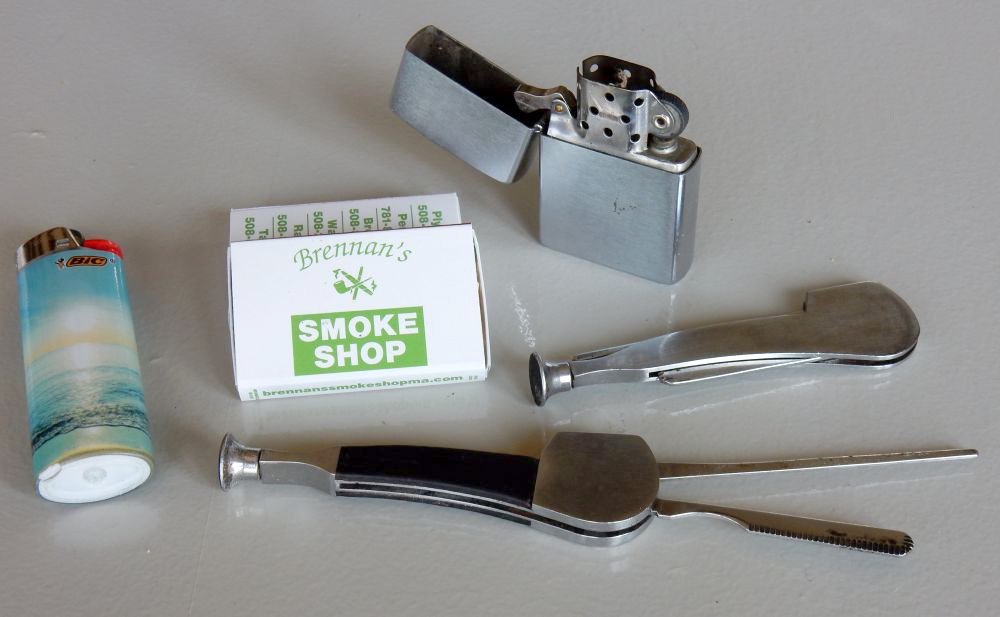
A butane lighter is best. Butane burns clean and odorless, so it won't impact the flavor of your tobacco. There are lots of fancy refillable lighters on the market, and you can actually spend a lot more on a lighter than on the pipe. Most high end lighters are fussy, difficult to fill, and prone to breakdown. That's why, after years of experience, I keep coming back to the disposable gas station cigarette lighters. They only cost a few bucks and they last for a month or so.
Matches are fine too. Just keep a ready supply of them because you'll be lighting a lot.
For reliability, you can't go wrong with a Zippo. However, the lighter fluid does impart a bit of petroleum flavor to the tobacco - not necessarily the best experience. This is minimized if you let it burn for a few minutes before applying the flame. Zippo makes a specialized pipe lighter with holes in the side of the chimney (not pictured here). This lets you hold it sideways over the bowl and get it lit much more easily, even in a heavy wind.
Definitely avoid any "torch" style cigar lighters. That flame might be great for the outdoors, but it's much too hot for briar and corn-cob pipes. You're likely to damage the finish of your pipe, or burn straight through the bowl.
For a pipe tool, you need something flat to tamp the tobacco down into the bowl, and something narrow enough to scoop out the ashes when you're finished. A flat-headed roofing nail would do the trick, but who wants to carry one of those around in their pocket? Ouch! Specialized "pipe nails" are available, with bigger heads and duller spade shaped points.
I like the tools pictured here because they're a bit more substantial. They have a flat scoop with a serrated edge for light scraping of the inside of the bowl, and a long pick which you can use to clear the shank if it gets obstructed.
Pipe Cleaners
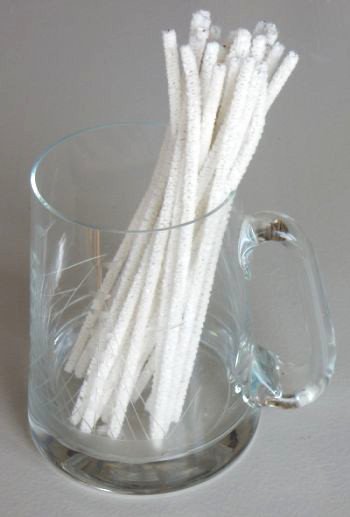
Believe it or not, pipe cleaners are not just for craft projects! I actually smoked my first pipe for several months without cleaning it. When it got almost entirely blocked, I thought, What could I use to clear this out? I need some kind of wire, covered in fuzz, something like a ... pipe cleaner! What a revelation!
Plan on using a couple of these after every smoke, or more if you choose heavily flavored, "syrupy" blends. Your taste buds will thank you for it.
Needless to say, you want to get these from your tobacconist, and not from a craft shop, where they are often dyed and made of nylon and other non-absorbent materials. Buy more than you think you need (they're cheap) and make sure you get cleaners that are long enough for the pipes you've chosen - especially if you go in for some of the wilder long-stemmed Churchwarden shapes. Go for the smooth pipe cleaners rather than the bristle variety, although you might keep a few of the latter on hand for occasional thorough scrubbing.
Reamers
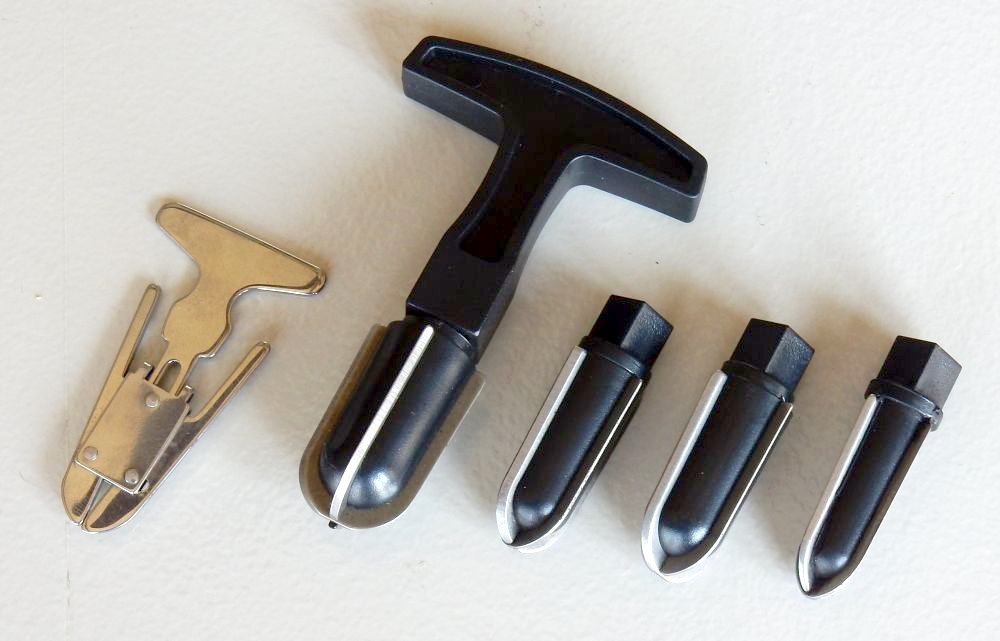
I'm including these for completeness, although you probably won't need one for a year or two. As you smoke your pipes, they'll build up a layer of carbon "cake" on the inside of the bowl. This is part of the process of breaking in the pipe, and will enhance the flavor of subsequent smokes. Too thick a cake, though, will eventually interfere with your enjoyment for the simple reason that you've got less room left for tobacco. I've actually seen some old-timers with pipe bowls caked down to the diameter of a pencil. The cake expands with heat, so too much carbon buildup creates a risk of cracking the bowl. A reaming tool will let you trim that cake back, and you want to keep it around the thickness of a dime.
Again, you won't have to do this often. Some smokers leave this job up to professionals, sending their pipes in for occasional deep clean and ream procedures.
Tobacco
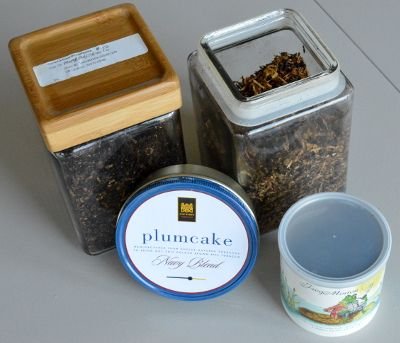
Finally! I've got lots more to say about tobacco in future posts, as there are literally thousands of blends to choose from. They all fit into a few major categories, though, and any decent tobacconist should be able to make a suggestion of where to start. Here's a super-simplified list with some suggestions.
- If you're a cigar smoker, start with an English Mixture. These typically contain a blend of Virginia, Burley, Turkish, Latakia, and Cavendish leaf which can be combined and mixed in endless permutations. (Some even contain cigar leaf!) Dunhill's Mixture 965 is a classic example.
- If you're a cigarette smoker, consider a Virginia tobacco. Virginia is high in natural sugar content and it has a wonderful natural sweetness. They can be a little hotter on the tongue, but I find Virginia blends give me the best sense of the sun and soil the leaf grew in. Virginia tobacco is usually the main component in cigarettes, but the quality of leaf in pipe tobacco is much higher. MacBaren's Virginia No. 1 is a good place to start.
- If you're new to smoking in general, well - try anything you like the smell of! But you might want to start with an Aromatic (or American) style mixture. These are the sweet-smelling, flavored tobaccos that many people associate with pipes. They're usually based on Burley tobaccos - a blander leaf with less natural flavors, which is nevertheless excellent at absorbing flavors which are added to it. Once an aromatic tobacco has been blended, it's sprayed or "cased" with liquors or fruit extracts: cherry, vanilla, whiskey, chocolate. The list is endless. Just keep in mind that, while aromatic blends smell great in the room, those flavorings don't always translate to what you experience as a smoker. Some flavors come through better than others. Captain Black White is a well-balanced tobacco with just a hint of vanilla flavoring. It's the blend I started with 22 years ago and it's still great today.
Time

Smoking a bowl of tobacco can take fifteen minutes or a couple of hours. It all depends on the size of the pipe, how you pack it, and how vigorously you smoke. Everyone has a different rhythm.
Pipe smoking is something that you do when you want to do it. It's meant to take a while, and to be savored and enjoyed. I recommend smoking less and enjoying it more.
Personally, I smoke between two to four bowls a day. (Incidentally, the surgeon general qualifies this as "moderate" pipe tobacco use, and has found no statistical impact on mortality at this level of consumption.) I smoke while I'm writing, reading, listening to music, or just sitting in the yard enjoying the weather.
There's so much to be mindful of while you enjoy your pipe: the flavors which change and develop over the peaceful hour, the warmth of the bowl, the grain and texture of the pipe, the patterns revealed in the rising clouds of smoke. Once you've taken all that in, it's amazing how receptive you are to the greater world around you. Tobacco stimulates ideas and imagination, and pipe smoking is the greatest meditation I've found.
I think these posts belong in the "smoking" category, but I'm going to tag them with "pipesmoking" too, in order to keep them together. So far these two posts are the only ones with this tag, but I'd love to hear from other pipe smokers here on Steemit and see that page grow, if you'd care to join me.
If I've convinced any readers to try this hobby, I'd love to hear about your adventures and answer your questions.
Happy smoking, Steemit!
